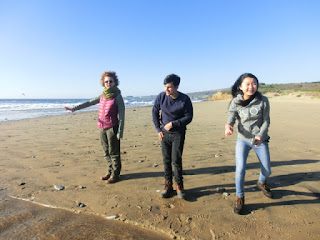As November draws to a close, we continue our way into the winter with the usual colder weather and less daylight - perfect conditions for Astronomy! EK and Robotics students this year have had the opportunity to use scientific equipment from the California Academy of Sciences including optical lenses, an Arduino-powered rover, and several carefully designed Astronomy labs. Below, you can see the students planning out the orbit paths of Mars and Earth using mathematical ratios, the Cartesian Coordinate Plane, and a laser to track retrograde motion! The experiment is conducted in three dimensional space and data is recorded in two dimensional space to explain the backwards motion of Mars in the night sky.
Looking up information about Mars.
A student uses Cartesian Coordinates to sketch out the approximate planetary orbits.
Reviewing key terms and begins typing up her Lab Report.
The approximate orbits begin to take shape as we add more data points.
Time to double check the math and perfect the approximate orbits!
Our two-dimensional "night sky" where we will record planetary movement using a laser and marker.
Students begin to model the planetary orbits in three dimensions.
Adding stars to the night sky for a more realistic background.
The night sky looks great!
After making points with the laser, students connect the dots to simulate the movement of Mars.
Connecting two spaced out data points.























































